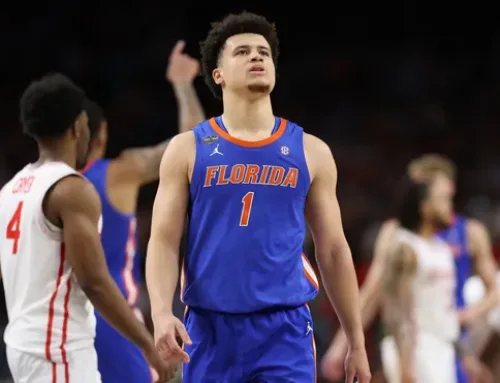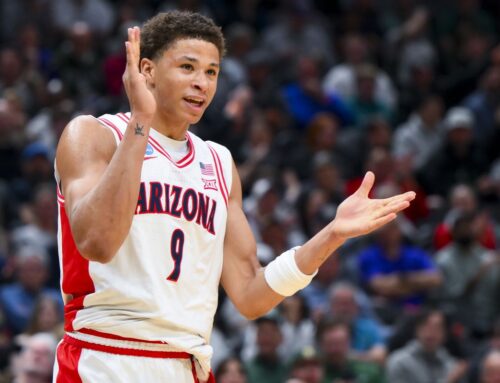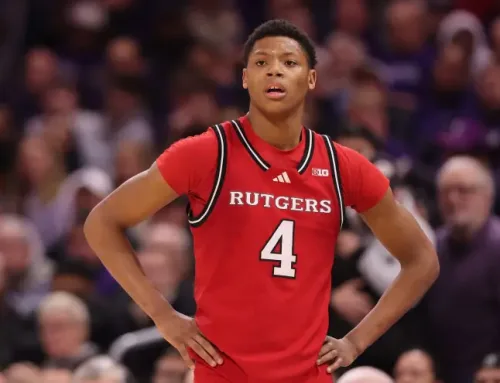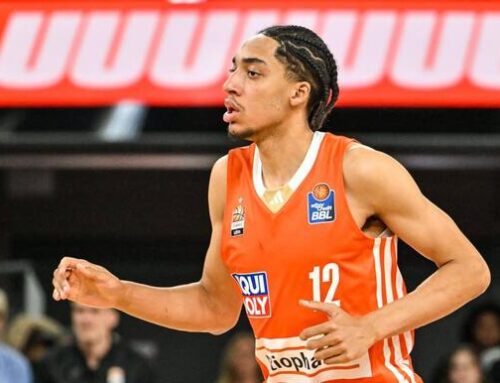By Avi Tyagi
Being a thin and tiny shooting guard is a tough way to live. Ask Tyler Herro. Yeah, he may have technically made an All-Star this season, and he had a phenomenal play-in series. But tiny, two guards who are defensive weaknesses have a tougher time in the playoffs, and if they score first, and can’t get to the rim, you start to question how valuable they really are. It’s not a total shock that Miami made the finals in 2023, once Herro was out, and they were able to build more lineups with 3+D caliber players around Bam and future HOFer Jimmy. To be that type of two-guard, you gotta be an elite movement shooter. Luckily, Tre Johnson fits that bill. Richard Earl Johnson III (a wonderful name) was destined to be compared to Booker from the minute he arrived on campus in Austin. With feistiness, fieriness, and a reputation of the best shooter in the class that precedes him, Tre did nothing to disprove those claims. Tre flies off screens full speed into catch-and-shoot opportunities. His pull-up is further along than the predecessors at his position, and he shot 40% from with almost a third of those attempts being unassisted. His shot chart was a sea of green, and his free-throw indicators and overall shooting motion are proof of his shot-making sustainability. Tre excels off of 1-2 footwork and hops alike. Even going right, Tre is able to time up his lower body rotation perfectly to get his shoulders square and to earn himself great looks to feather in potentially difficult attempts.
The other very meaningful good news: The 19-year-old Tre measured in at 190 pounds, with a height of 6-4 3/4 and a 6-10 1/4 wingspan. That’s fantastic and a bare necessity towards reaching his high-end outcomes. Tre doesn’t gracefully skate through the paint to generate quality rim attempts. His office exists everywhere else, outside the box. And herein lies part of the problem. Tre shot a little under 45% from 2. That’s a tough way to live, and it’s driven by a proclivity for the middy and a lack of instinctive creativity as a finisher. Tre uses long steps and slow step finishes well, but his control and ability to spin the ball off the glass can prove lacking on occasion. He hurtles into the paint without a plan at times, and floaty passes or line drives with no gas on them become interceptions.
Yet, with all that said, the closest comparable to this archetype of player is probably sophomore-year Immanuel Quickley. Quickley’s grown into a fantastic player in the league despite having far more questions in his draft cycle than Tre did, further highlighting the value of Tre’s upside. The release point and ball handling will allow Tre to build out a sustainable midrange game even in the league. The wingspan will cover for some defensive mistakes, and naturally, quick explosiveness makes him tougher to target defensively on switches. Defensively, he has to clean up fundamentals, but that’s for maturity and a coaching staff to take care of. He’s far too flat-footed and can lose attentiveness when he’s forced to be a low man or fight over multiple screens. All natural for a 19-year-old guard. His footwork belies an attention to detail and hardworking ethic that reports only seem to confirm. One does not simply become the best shooter in the class through sheer luck and natural ability. It takes time and a love of the craft. Tre plays too often like he has to attack alone. Teams will take advantage of his movement shooting early on to create easy reads for him as defenders begin to panic. Strength development and age should help add a few RPMs to his passes. Booker and Jamal Murray are prestigious names to aim for, but Tre is better positioned than most to aim for those lofty heights. Of all the comparable guards I’ve listed, none have been as comfortable taking contested pull-ups during their freshman seasons of college. And none were depended on offensively to self-generate paint points to the same degree as Tre. This was not the cushy Kentucky ecosystem filled with future stars. This was a Texas team dependent on one freshman to build their offense around. Tre’s explosiveness at the combine and sheer audacity of his dunk attempts are evidence of a better vertical finisher than otherwise shown. NBA spacing will do wonders for his game. This is likely a future rookie max contract player, and maybe, just maybe, a future star.





